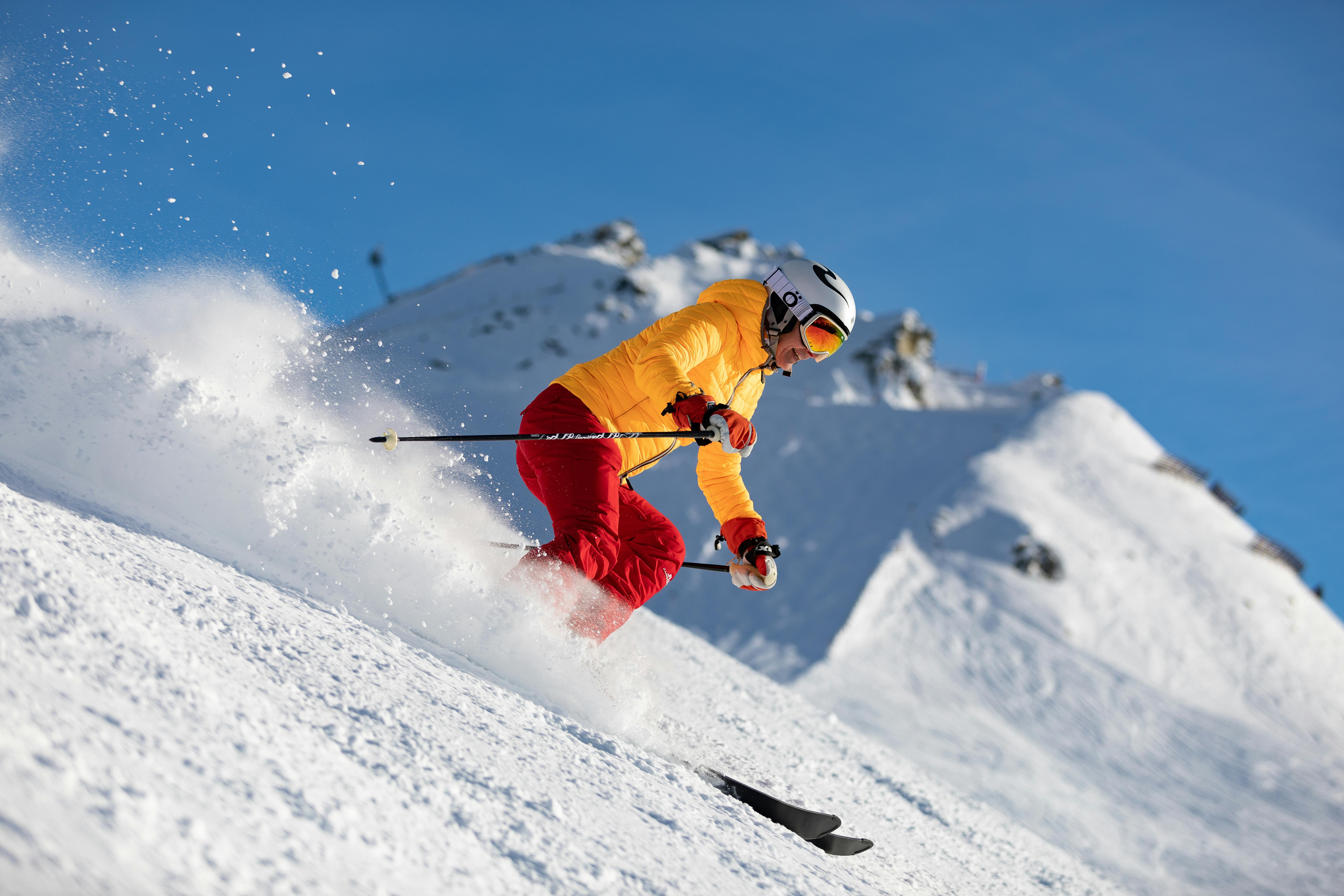Skiing Basics: Techniques, Gear, and Mountain Safety
Skiing transforms winter landscapes into thrilling playgrounds where enthusiasts glide down snow-covered slopes with grace and excitement. This comprehensive guide covers essential skiing fundamentals, from understanding the sport's core principles to selecting proper equipment and navigating mountain conditions safely. Whether you're planning your first winter adventure or looking to enhance your existing skills, mastering these basics will help you enjoy the slopes with confidence while prioritizing safety and proper preparation.

Skiing combines athletic skill, outdoor adventure, and winter recreation into one exhilarating experience. This winter sport involves descending snow-covered slopes using specialized equipment while maintaining balance and control. From gentle beginner hills to challenging expert terrain, skiing offers opportunities for people of all skill levels to enjoy mountain environments during winter months.
What is skiing?
Skiing is a winter sport where participants use long, narrow boards called skis to glide over snow-covered surfaces. The sport originated thousands of years ago as a practical means of winter transportation in snowy regions. Modern recreational skiing developed in the Alps during the 19th century and has since evolved into both a popular leisure activity and competitive sport. Skiers use poles for balance and steering while navigating downhill slopes at ski resorts or backcountry locations. The sport requires coordination, balance, and an understanding of snow conditions to execute turns, control speed, and navigate terrain safely.
How does snow affect skiing?
Snow conditions significantly impact skiing performance and safety. Fresh powder snow provides excellent skiing with smooth turns and soft landings, while packed snow offers stable, predictable surfaces ideal for beginners. Icy conditions require advanced technique and sharp ski edges for control. Temperature affects snow quality throughout the day - morning conditions often feature firmer snow that softens as temperatures rise. Wind can create variable conditions with windblown areas becoming icy while sheltered spots retain powder. Skiers must adapt their technique based on snow type, adjusting turn radius, edge pressure, and speed accordingly. Understanding these conditions helps skiers choose appropriate terrain and modify their approach for optimal performance.
How to prepare for winter ski trips?
Proper preparation ensures safe and enjoyable skiing experiences. Physical conditioning should begin weeks before your trip, focusing on leg strength, cardiovascular fitness, and balance exercises. Research your destination’s weather conditions, trail difficulty levels, and lift ticket policies. Book accommodations and equipment rentals in advance, especially during peak seasons. Pack appropriate clothing including moisture-wicking base layers, insulating mid-layers, and waterproof outer shells. Essential items include sunscreen, goggles, gloves, and proper socks. Check ski resort websites for current conditions, lift operations, and any COVID-related protocols. Consider taking lessons if you’re a beginner or want to improve specific techniques. Plan rest days and alternative activities in case of poor weather conditions.
What ski equipment do beginners and regular skiers need?
Essential skiing equipment varies based on skill level and skiing frequency. Beginners need properly fitted skis, boots, bindings, poles, helmet, and goggles. Ski length should typically reach between the chin and nose when standing upright. Boots must fit snugly without pressure points, as proper boot fit directly affects control and comfort. Bindings should be professionally adjusted to release appropriately based on skier weight, height, and ability level.
| Equipment Type | Beginner Option | Regular Skier Option | Cost Estimation |
|---|---|---|---|
| Skis | Rental or entry-level all-mountain | Mid-range all-mountain or specialized | $200-$800 |
| Boots | Rental or comfort-focused | Performance-oriented with custom fit | $300-$700 |
| Bindings | Basic safety release | Advanced with multiple settings | $150-$400 |
| Helmet | Standard certified model | Lightweight with ventilation | $50-$200 |
| Goggles | Basic UV protection | Anti-fog with interchangeable lenses | $40-$250 |
| Poles | Standard aluminum | Carbon fiber or adjustable | $30-$150 |
Prices, rates, or cost estimates mentioned in this article are based on the latest available information but may change over time. Independent research is advised before making financial decisions.
How do mountains influence ski conditions?
Mountain geography creates diverse skiing environments through elevation, aspect, and terrain features. Higher elevations typically offer more reliable snow coverage and longer seasons due to colder temperatures. North-facing slopes retain snow longer and often provide better powder conditions, while south-facing slopes receive more sun exposure, creating variable snow surfaces throughout the day. Mountain weather patterns can change rapidly, with conditions varying significantly between different areas of the same resort. Wind patterns affect snow distribution, creating cornices, wind slabs, and scoured areas. Terrain features like trees, rocks, and slope angle influence snow accumulation and avalanche risk. Understanding these factors helps skiers choose appropriate runs and timing for optimal conditions while avoiding potentially dangerous situations.
Skiing offers endless opportunities for winter recreation when approached with proper knowledge, equipment, and safety awareness. Success on the slopes comes from understanding fundamental techniques, respecting mountain conditions, and gradually building skills through practice and instruction. Whether enjoying gentle cruising runs or challenging steep terrain, prioritizing safety and preparation ensures memorable experiences in mountain environments. As you develop your skiing abilities, continue learning about equipment advances, technique improvements, and mountain safety practices to enhance your enjoyment of this rewarding winter sport.






